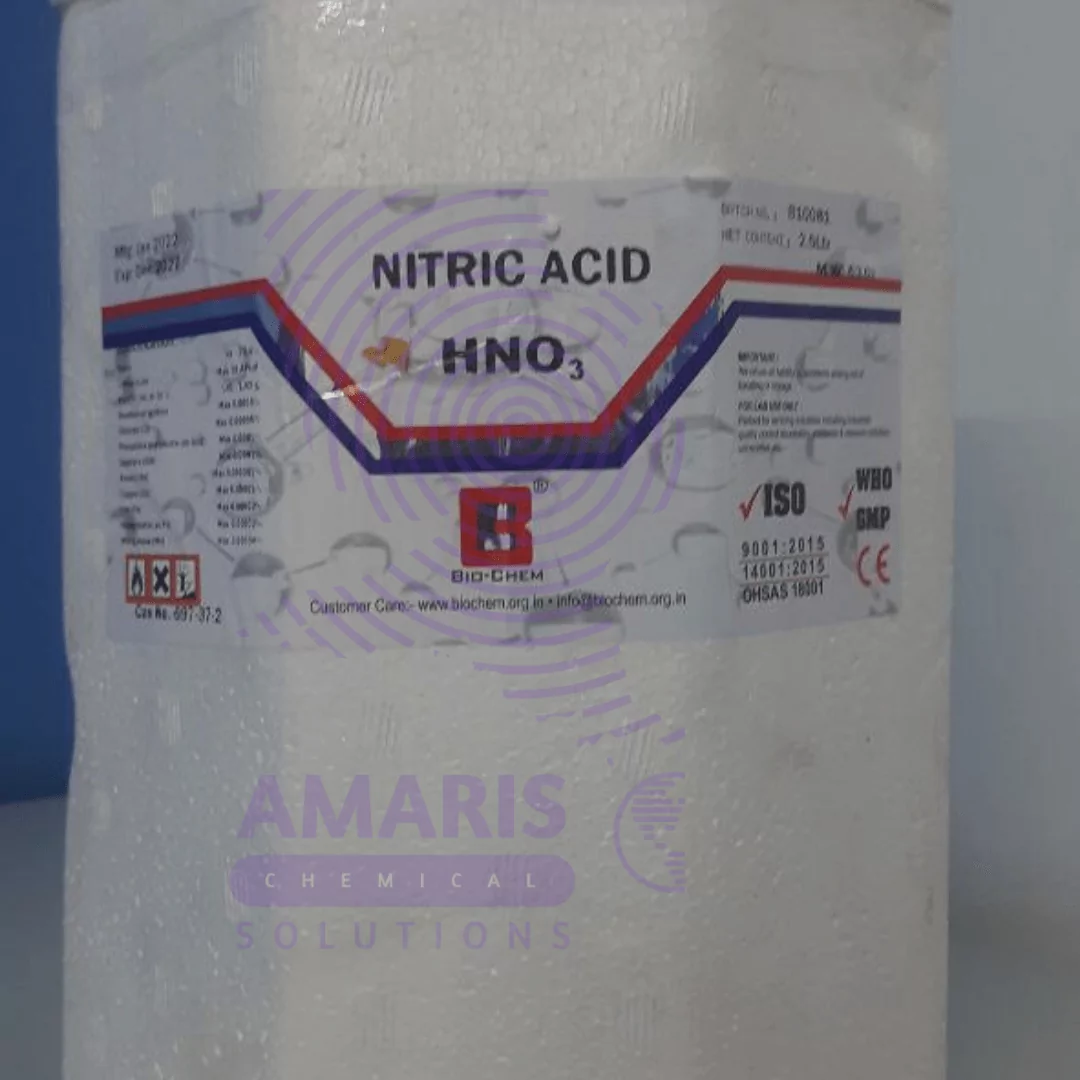Exploring the Chemical World: The Importance of Nitric Acid in Modern Science

Nitric acid (HNO₃) is one of the most significant and widely used acids in modern science and industry. This strong, highly corrosive mineral acid has diverse applications, ranging from laboratory research to large-scale industrial processes. Its unique chemical properties make it indispensable in various scientific advancements and manufacturing sectors.
Key Properties of Nitric Acid
Nitric acid is a powerful oxidizing agent, capable of dissolving most metals except a few noble ones like gold and platinum. When combined with hydrochloric acid, it forms aqua regia, a potent mixture used to dissolve even these resistant metals. In its concentrated form, nitric acid emits reddish-brown fumes due to the presence of nitrogen dioxide, making it a fuming acid under certain conditions.
Industrial and Scientific Applications
- Fertilizer Production: One of the most crucial uses of nitric acid is in the production of ammonium nitrate, a key component in nitrogen-based fertilizers. This supports global agriculture by enhancing soil fertility and boosting crop yields.
- Explosives Manufacturing: Nitric acid plays a vital role in the production of explosives such as nitroglycerin, TNT (trinitrotoluene), and RDX (cyclotrimethylene trinitramine). These compounds are widely used in mining, construction, and defense industries.
- Metallurgy and Etching: In metal refining and processing, nitric acid is used for cleaning, etching, and passivating stainless steel and other alloys. It helps remove impurities and corrosion, improving the durability of metals.
- Pharmaceutical and Laboratory Uses: Nitric acid is essential in chemical synthesis, particularly in the production of pharmaceuticals, dyes, and other organic compounds. In analytical laboratories, it is used for acid digestion, sample preparation, and chemical analysis.
- Rocket Propellants: Certain derivatives of nitric acid serve as key components in rocket fuels, particularly in aerospace and defense applications.
Environmental and Safety Considerations
Despite its many benefits, Nitric acid poses environmental and safety challenges. Its corrosive nature can cause severe burns and respiratory issues if mishandled. Moreover, its role in the production of nitrogen oxides contributes to air pollution and acid rain. Therefore, stringent handling, storage, and disposal regulations are essential to minimize risks.
Conclusion
From agriculture to aerospace, Nitric acid continues to be a cornerstone of modern science and industry. Its remarkable versatility underscores its importance, making it an invaluable chemical in technological progress and scientific research. However, responsible usage and environmental management remain critical to ensure its sustainable application in the future.


 Emollients
Emollients Humectants
Humectants UV Filters
UV Filters Surfactants (cosmetic)
Surfactants (cosmetic) Preservatives (cosmetic)
Preservatives (cosmetic) Fragrances and Essential Oils
Fragrances and Essential Oils Antioxidants (cosmetics)
Antioxidants (cosmetics)
 Solvents (lab)
Solvents (lab) Chromatography Chemicals
Chromatography Chemicals Microbiology and Cell Culture Reagents
Microbiology and Cell Culture Reagents Biochemical Reagents
Biochemical Reagents Inorganic and Organic Standards
Inorganic and Organic Standards Spectroscopy Reagents
Spectroscopy Reagents Molecular Biology Reagents
Molecular Biology Reagents
 Precious Metal Extraction Agents
Precious Metal Extraction Agents
 Plasticizers
Plasticizers Polymerization Initiators
Polymerization Initiators Stabilizers
Stabilizers Monomers
Monomers Fillers and Reinforcements
Fillers and Reinforcements Antioxidants (plastics)
Antioxidants (plastics) Colorants (plastic pigments,Dyes)
Colorants (plastic pigments,Dyes)
 Fertilizers
Fertilizers Plant Growth Regulators
Plant Growth Regulators Soil Conditioners
Soil Conditioners Animal Feed Additives
Animal Feed Additives Biostimulants
Biostimulants
 Dough Conditioners
Dough Conditioners Flour Treatments
Flour Treatments Fat Replacers
Fat Replacers Preservatives (baking)
Preservatives (baking)
 Surfactants (cleaning)
Surfactants (cleaning) Builders
Builders Bleaching Agents
Bleaching Agents Enzymes
Enzymes Solvents (cleaning)
Solvents (cleaning) Fragrances
Fragrances Disinfectant
Disinfectant Metal cleaning
Metal cleaning
 Binders/Resins
Binders/Resins Pigments
Pigments Solvents (paint)
Solvents (paint) Additives
Additives Driers
Driers Anti-Corrosion Agents
Anti-Corrosion Agents Specialty Coatings
Specialty Coatings Functional Coatings
Functional Coatings Application-Specific Coatings
Application-Specific Coatings
 Sealants and Adhesives
Sealants and Adhesives
 Biodegradable Surfactants
Biodegradable Surfactants Bio-based Solvents
Bio-based Solvents Renewable Polymers
Renewable Polymers Carbon Capture Chemicals
Carbon Capture Chemicals Wastewater Treatment Chemicals
Wastewater Treatment Chemicals
 Preservatives (food)
Preservatives (food) Flavor Enhancers
Flavor Enhancers Acidulants
Acidulants Sweeteners
Sweeteners Emulsifiers
Emulsifiers Antioxidants (food)
Antioxidants (food) Colorants (food)
Colorants (food) Nutrient Supplements
Nutrient Supplements Nutraceutical Ingredients
Nutraceutical Ingredients
 Fresh Herbs
Fresh Herbs Whole Spices
Whole Spices Ground Spices
Ground Spices Spice Blends
Spice Blends
 Surfactants(oil)
Surfactants(oil)
 Antibiotics
Antibiotics Active Pharmaceutical Ingredients
Active Pharmaceutical Ingredients Excipients
Excipients Vaccine Adjuvants
Vaccine Adjuvants Nutraceutical Ingredients
Nutraceutical Ingredients Solvents (pharmaceutical)
Solvents (pharmaceutical)
 Automotive chemicals
Automotive chemicals Pyrotechnic Chemicals
Pyrotechnic Chemicals


 Vulcanizing Agents
Vulcanizing Agents Accelerators & Retarders
Accelerators & Retarders Antidegradants
Antidegradants Reinforcing Agents
Reinforcing Agents Plasticizers & Softeners
Plasticizers & Softeners Fillers & Extenders
Fillers & Extenders Blowing Agents
Blowing Agents Adhesion Promoters
Adhesion Promoters












